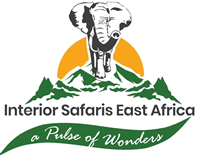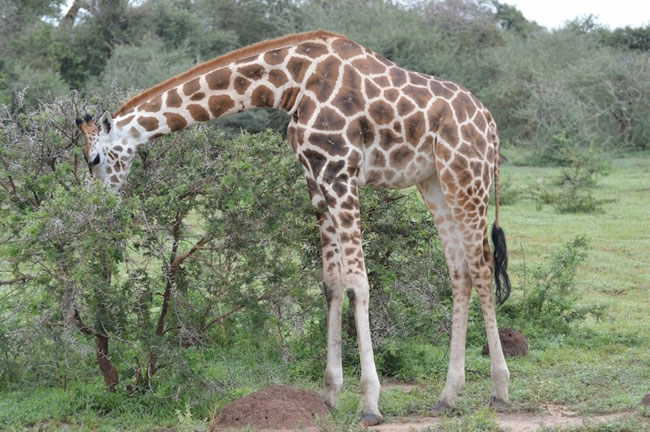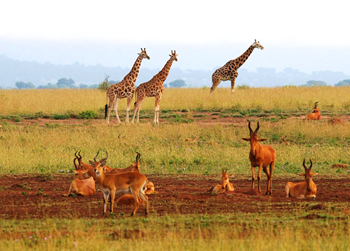
This is Uganda’s largest conservation area totaling to 3840km2 together with the Bugungu, Karuma wildlife reserves and the Budongo forest. Modern conservation saw it gazetted in 1952 together with Queen Elizabeth National park and within the Bunyoro game reserve, which was proclaimed in 1910 following the evacuation of the human population due to the sleeping sickness epidemic evident today with the plenty of tsetse flies within the their breeding colonies mostly on the southern part of the peak near the top of the falls where the park derives its name at the President of the Royal Geographical Society courtesy of Sir Samuel Baker in company of his wife Florence Baker in the 1880s, which was later changed by President Amin to Kabalega falls, after the former king of Bunyoro, a name that still appears on some maps of Uganda which was all down played after the fall of Idi Amin.
Lying in the northern end of the Albertine rift valley, where the sweeping bunyoro escarpment tumble into vast savanna, Murchison falls National Park is the largest and oldest national park in Uganda covering an area of approximately 3840kmsq and stands at an elevation of between 619-1292m above sea level. The park was First gazetted as a game reserve in 1926 with a variety of habitats ranging from ironwood forest, riverine forest, dry and moist woodlands with grassy understory, borassus palm savannah with termitaria, papyrus swamps, lakes and rivers.
The park protects a large chunk of untamed African savanna bisected by the Nile. It is named after the dramatic Murchison falls where the world’s longest river explodes violently through a narrow cleft in the rift valley escarpment to plunge into a frothing pool 43m below. Wildlife population has largely recovered from the poaching of the 1980s with 76 species of mammals and 451 birds.
In the lush green borassus grassland to the north of the land are some the largest elephants, buffaloes, giraffes and a variety of antelopes are often spotted on a game drive while lions are seen with increased frequency
The Nile itself hosts one of Africa’s densest hippo and crocodile population dazzling variety of water birds including the world’s most accessible wild population of the rare shoebill stork.
Rabongo forest: In the south east is Rabongo forest home to the chimps and other rain forest creatures. It is engulfed by the savannah plains making it a truly adorable site for quiet nature walks, educational tours, research and trekking of primates where you are likely to encounter the white Colobus monkeys, the red-tailed monkeys, baboons and chimpanzees plus birds, medicinal plants and trees. The forest is also considered a birders haven because of the numerous endemic and endangered species housed in the Forest. Picnics and camping are acceptable and possible at the wairingo forest.
Budongo forest: Lying in the south west of Murchison falls national park is Budongo forest which is adjacent with the Kaniyo Pabid Forest. The forest is rich with an amazing 24 mammal species, over 360 bird species, 289 butterflies and 465 plants. Among the mammals present are about 800 chimpanzees which visitors can trek on a visit to this magnificent conservation area. Along the royal mile, the awesome stretch of beauty exposes a good number of bird species and is highly recommended for twichers.
Kaniyo Pabid Forest: south west of Murchison falls conservation area is the kaniyo pabid forest which houses black-and-white colobus and blue monkeys, olive baboons, and a habituated chimp group which can be tracked. Elephants, buffalos, lions and leopards are commonly cited here. In addition to that are the awesome bird species found in the forest chocolate-backed kingfisher, white-thighed hornbill and Pavel’s illadopsis endemic to this forest?
The park can be accessed by road and by air. There are a number of routes that reach the heart of this lovely park. The river is crossed by ferry that runs roughly hourly trips throughout the day. Two southerly approaches to Paraa lead out to Masindi which is a four hours’ drive to Kampala. Another longer but more scenic alternative from Masindi to the bugungu gate including the passage through Budongo forest and a memorable descent of the rift valley escarpment with views across Lake Albert towards the mountains of Congo. The park can also be accessed via the Chobe, wankwar, mubako, and tangi gates north of the Nile which can be reached through the Kampala- pakwach route which crosses the Nile at the Karuma Bridge in the northern corner of the park 260km from Kampala.
Pakuba airfield 19km from northern Murchison falls can be reached by a scheduled and charter flight from Entebbe or Kajansi near Kampala. Other airfields in the park include Chobe to the east and bugungu near Murchison falls to the south.
While in Murchison falls national park one can take part in a number of activities given the biodiversity of the park.
Game drive: A trip to the Murchison falls National Park is not complete without a game drive on the buligi game tracks on the northern part of the banks. With a well-trained interior safaris EA guide you may have an opportunity to see and photograph a number of animals.
Launch cruise: The launch trip upstream from paraa presents an astonishing display of wildlife and culminated with a memorable frontal view of the astonishing falls. An early morning launch cruise on the Albert delta is awesome for birders. There is an option of a tranquil sundowner with classic views of the equatorial sunset reflected on the river
Birding can be done on both the game drives and the launch cruise offering a great opportunity for one to spot distinctive bird species including the savannah forest birds, water birds and Albertine rift endemics
Nature Walks: The vast landscapes and varied scenery of Murchison falls and the surrounding conservation areas can be explored on foot trails through the kaniyo pabid and Rabongo forest provide sighting of many primates and birds while around the Nile delta, 2-4 hours guided swamp walks offer possible shoebill sightings.
Sport fishing: The banks of the Nile below Murchison falls provide exciting challenges to anglers living within strong currents and highly oxygenated water is the Nile perch. There is the chance to land a massive catch – the record is 108kgs.
Cultural Encounter: Energetic dancers from mubako perform around the lodge campfires, making for a magical African experience at dusk boomu women’s group offers accommodation a craft shop and village tours, revealing the realities of life in this rural community.
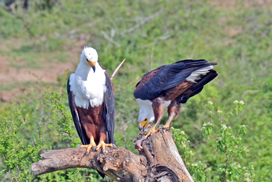 Day 1: Ziwa Rhino Sanctuary
Day 1: Ziwa Rhino Sanctuary
Travel to Ziwa Rhino Sanctuary, the only place in Uganda to see rhinos. On your 1–2-hour trek you will have the opportunity to do some birding. Continue to Murchison Falls National Park.
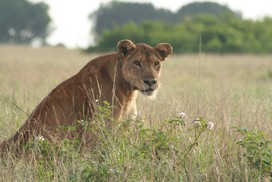 Day 2: Murchison Falls National Park for birding and game safari and boat cruise
Day 2: Murchison Falls National Park for birding and game safari and boat cruise
A full day birding safari in the Park, including crossing the River Nile onto the north bank for a game drive. Enjoy a boat cruise along the River Nile to the bottom of Murchison Falls. Hike for 45 minutes to the top of the Falls.
 Day 3: Boat trip along the delta
Day 3: Boat trip along the delta
Take a boat along the Nile towards the delta to look for Shoebill. Continue to Lake Albert for more birding. Alight at Wanseko fishing village and continue your journey to Masindi via the Albertine Rift Valley escarpment and through parts of Budongo Forest.
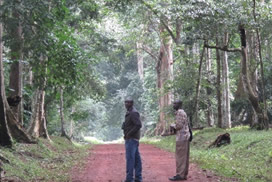 Day 4: Birding at Budongo Forest
Day 4: Birding at Budongo Forest
Travel to Budongo Forest for some excellent forest birding.
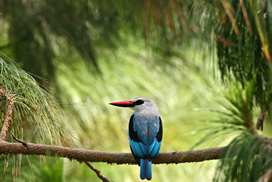 Day 5: Return to Kampala
Day 5: Return to Kampala
Drive for 4–5 hours back to Kampala, birding along the road as you go.
END OF THE TOUR
NB: wildlife sightings are not guaranteed. If you have a particular bird/s that you want to see, let us know and we will tailor your itinerary to maximise your chance of spotting it.
